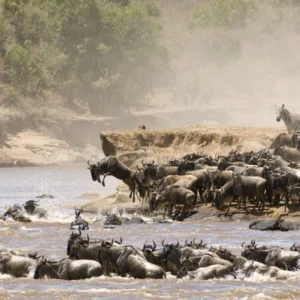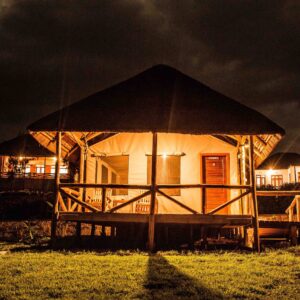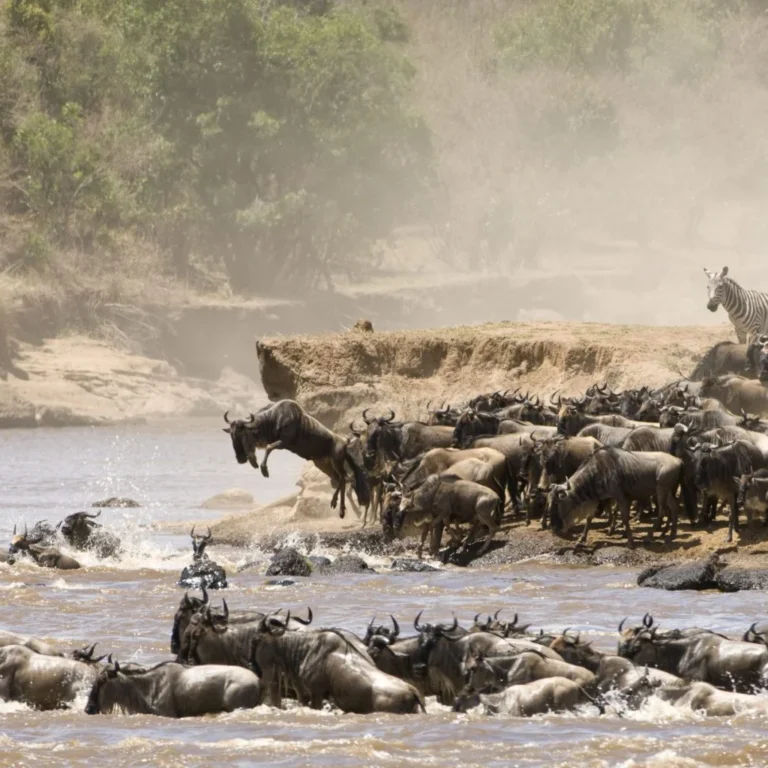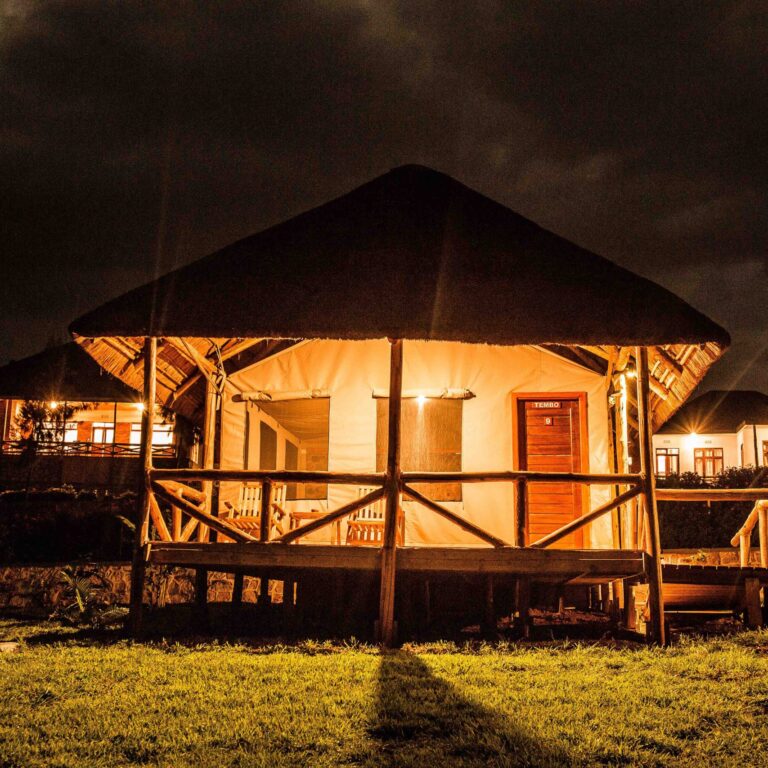Towering majestically on the African continent, Kilimanjaro is a natural wonder that beckons adventurers from around the globe. Its height and prominence make it a truly remarkable sight, and the altitude gain when climbing it adds an element of thrill to the journey. In this article, we will delve into the fascinating details of Kilimanjaro’s height and prominence and explore the challenges faced during the ascent. So, elevation gains on your Kilimanjaro Climb gear up and prepare to embark on an lifetime experience to conquer the heights of Kilimanjaro! Kilimanjaro hike distance and elevation, the trailhead starts at Machame Gate, 1,640 meters (5,380 feet), and reaches an elevation gain of 4,255 meters (14,051 feet).
The elevation gain for a Kilimanjaro climb, from the trailhead to the summit (Uhuru Peak, 5,895m/19,341ft), is approximately 4,000 to 4,900 meters (13,000 to 16,100 feet), depending on the chosen route. For example, the Marangu route has an elevation gain of about 4,095 meters (13,435 feet), while the Machame route can involve up to 16,000 to 17,000 feet of gain. This significant vertical gain, coupled with the rapid altitude change, is a primary challenge for climbers and necessitates careful acclimatization.
Height and Prominence of Kilimanjaro, and Altitude Gain When Climbing It
Kilimanjaro, often referred to as the “Roof of Africa,” stands tall at a staggering height of 5,895 meters (19,341 feet). Its summit, Uhuru Peak, is the highest point on the continent and a coveted destination for mountaineers and adventure enthusiasts worldwide. Kilimanjaro’s prominence is equally impressive, as it rises abruptly from the surrounding plains. Creating an awe-inspiring spectacle that captures the imagination.
The Significance of Kilimanjaro’s Height and Prominence
The remarkable height of Kilimanjaro grants it an air of majesty. Allowing climbers to experience the thrill of scaling one of the world’s tallest peaks. The prominence of the mountain is equally significant, as it stands as a testament to the raw power and beauty of nature. Kilimanjaro’s towering presence has captured the hearts of countless explorers, and its allure continues to inspire daring adventurers to conquer its heights.
Altitude Gain: A Challenging Journey
Embarking on a journey to summit Kilimanjaro entails a significant altitude gain, which presents its own set of challenges. As climbers ascend the mountain, they must acclimatize to the changing atmospheric conditions and decreasing oxygen levels. Altitude sickness, a potential risk at higher elevations, necessitates a careful approach and proper preparation.
Preparing for the Altitude Gain
To tackle the altitude gain effectively, hikers must undergo by training and preparation regimen. Physical fitness is crucial, as it enhances endurance and helps the body adjust to the demands of higher altitudes. Cardiovascular exercises, strength training, and regular hiking can significantly contribute to the overall fitness required for a successful ascent.
The Climbing Routes: Choosing the Right Path
Kilimanjaro offers several climbing routes, each with its own unique features and altitude gain profiles. Popular routes include the Marangu, Machame. Lemosho, and Rongai routes. Before embarking on the journey, hikers must carefully select a route that suits their fitness level. Time constraints, and preferences. Considering the altitude gain of each route is vital to ensure a safe and enjoyable experience.
FAQs about Kilimanjaro’s Height/Elevation and Altitude Gain
What is the average altitude gain per day when climbing Kilimanjaro?
When climbing Kilimanjaro, the average altitude gain per day is approximately 1,000 meters (3,300 feet). This gradual increase allows climbers to acclimatize to the changing atmospheric conditions and reduce the risk of altitude sickness.
How does altitude gain affect the body?
As climbers ascend to higher altitudes, the decreasing oxygen levels can have various effects on the body. Some individuals may experience symptoms of altitude sickness, such as headaches, nausea, fatigue, and shortness of breath. It is essential to acclimatize properly and listen to your body to avoid more severe complications.
What are the risks associated with altitude gain on Kilimanjaro?
Altitude gain on Kilimanjaro poses certain risks, primarily related to altitude sickness. Severe cases of altitude sickness can lead to more dangerous conditions. Such as high altitude pulmonary edema (HAPE) or high altitude cerebral edema (HACE). It is crucial to recognize the symptoms, descend if necessary, and consult with experienced guides or medical professionals.
How can climbers prepare for the altitude gain?
To prepare for the altitude gain when climbing Kilimanjaro. Hikers should engage in physical training to improve cardiovascular fitness and endurance. Regular exercise, including hiking, jogging, and cycling, can help strengthen the body and prepare it for the demands of higher altitudes. Additionally, proper hydration and nutrition play a crucial role in supporting overall health and acclimatization.
Are there any medications or supplements that can help with altitude gain?
There are certain medications, such as acetazolamide (Diamox). That can assist with acclimatization by stimulating breathing and enlarge the excretion of bicarbonate in the urine. However, it is important to consult with a healthcare professional before taking any medications. Or supplements, as they may have side effects or interact with other medications.
How long does it take to Acclimatize to the altitude gain on Kilimanjaro?
The duration of acclimatization varies for each individual. Typically, climbers spend several days ascending gradually to allow their bodies to adjust to the altitude. Adequate rest, hydration, and a slow ascent can contribute to successful acclimatization. It is crucial to listen to your body and communicate any concerns with your guide.
What is the change in elevation from the base of Mt Kilimanjaro to the top?
What this means is that the base of Kilimanjaro is around 1,000 m above sea level, and Kilimanjaro itself rises about 4,900 m from its plateau base. As you can see in the map below, Kilimanjaro is far from the Indian Ocean coastline. So it’s unsurprising that it’s prominence is not its full altitude.
What is Altitude gains of the seven Kilimanjaro routes
So what is the altitude or elevation gain of each of the routes? Here are the numbers elevation gains on your Kilimanjaro Climb:
- Northern Circuit: 3,795 m (12,541 ft)
- Lemosho route: 3,795 m (12,541 ft)
- Shira route: 2,481 m (8,231 ft)
- Machame route: 4,255 m (14,051 ft)
- Marangu route: 4,052 m (13,384 ft)
- Rongai route: 3,945 m (13,033 ft)
- Umbwe route: 4,095 m (13,435 ft)
9. What is the elevation of the Kilimanjaro gate?
Kilimanjaro Height Standing tall at 5,895 meters (19,341 feet) above sea level, it is also the world\’s highest free-standing mountain. Uhuru Peak, Kilimanjaro\’s highest summit, is the main location for most hikers. Kilimanjaro’s summit is just one of a trio of distinct volcanoes, Kibo, Mawenzi, and Shira.
- Northern Circuit: 2,100 m (6,890 ft) at Lemosho Gate
- Lemosho route: 2,100 m (6,890 ft) at Lemosho Gate
- Shira route: 3,414 m (11,200 ft) at Morum Barrier
- Machame route: 1,640 m (5,380 ft) at Machame Gate
- Marangu route: 1,843 m (6,047 ft) at Marangu Gate
- Rongai route: 1,950 m (6,398 ft) at Rongai Gate
- Umbwe route: 1,800 m (5,906 ft) at Umbwe Gate
How much Elevation gain on Kilimanjaro hike?
Elevation gain: 1,136 m/3,726 ft. Descent Start: Uhuru Peak 5,896 m/19,344 ft. End: Crater Camp 5,600 m/18,700 ft.
What is Daily Distances Traveled on the Lemosho Route up Kilimanjaro
The full day is 12 – 14 hours of trekking and covers 11.2 miles/ 18.1km. 1,245m/ 4,084 feet up the mountain from Barafu or 1,095m/ 3,592 feet up from Kosovo Camp to the summit. You then have 2,795m/ 9,169 feet down hill all in the same day.
Elevation Gains on Your Kilimanjaro Climb: Reaching New Heights
Welcome to our comprehensive guide on elevation gains during your Kilimanjaro climb. If you\’re seeking an adventure that will take you to the roof of Africa, Mount Kilimanjaro is an unparalleled choice. Towering at 5,895 meters (19,341 feet) above sea level, this majestic mountain offers a nice and tough experience for avid hikers and nature enthusiasts alike. In this article, we will delve into the intricacies of height gains, preparing you for the journey of a lifetime.
Understanding Elevation Gains
Elevation gains refer to the total vertical distance you ascend during your climb. As you conquer the various routes to Kilimanjaro’s summit, you’ll encounter different height gains that play a crucial role in determining the difficulty and duration of your trek. Let’s explore the key routes and their respective elevation gains:
1. Marangu Route
Known as the “Coca-Cola” route, the Marangu Route is the oldest and most popular path up Kilimanjaro. With an elevation gain of approximately 4,900 feet (1,490 meters), this route offers a moderate challenge and allows climbers to sleep in huts along the way.
2. Machame Route
The Machame Route, often referred to as the “Whiskey” route, provides a more scenic and challenging option. With an elevation gain of around 5,400 feet (1,646 meters), this path takes you through diverse landscapes and offers breathtaking views. It is a favorite among holiday seeking a amazing and lifetime experience.
3. Lemosho Route
For those looking for a longer and more gradual ascent, the Lemosho Route is an excellent choice. With an elevation gain of approximately 6,500 feet (1,981 meters), this route allows for better acclimatization, increasing your chances of a successful summit.
4. Rongai Route
The Rongai Route, originating from the northern side of the mountain, presents a unique perspective and is less crowded than other routes. With an height gain of about 5,900 feet (1,798 meters), this trail offers a serene and tranquil atmosphere as you make your way to the summit.
Elevation Profiles: Ascending to the Roof of Africa
Each route on Mount Kilimanjaro has its own distinct elevation profile, dictating the pace and challenges you’ll encounter. Let’s take a closer look at the elevation profiles of the four main routes:
Marangu Route Elevation Profile
First Day: Marangu Gate (6,000 feet/1,830 meters) to Mandara Hut (8,858 feet/2,700 meters)
Second Day: Mandara Hut to Horombo Hut (12,201 feet/3,720 meters)
Day three: Horombo Hut to Kibo Hut (15,430 feet/4,700 meters)
Day four: Summit attempt: Kibo Hut to Uhuru Peak (19,341 feet/5,895 meters) and descent to Horombo Hut
Machame Route Elevation Profile
First Day: Machame Gate (5,950 feet/1,815 meters) to Machame Camp (9,840 feet/3,000 meters)
Second Day: Machame Camp to Shira Camp (12,600 feet/3,840 meters)
Third Day: Shira Camp to Barranco Camp (12,960 feet/3,950 meters)
Fourth Day: Barranco Camp to Karanga Camp (13,106 feet/3,990 meters)
Fiveth: Karanga Camp to Barafu Camp (15,331 feet/4,670 meters)
Six Day : Summit attempt: Barafu Camp to Uhuru Peak and descent to Mweka Camp
Lemosho Route Elevation Profile
First Day: Lemosho Gate (7,742 feet/2,360 meters) to Mti Mkubwa Camp (9,498 feet/2,895 meters)
Second Day: Mti Mkubwa Camp to Shira Camp 1 (11,499 feet/3,505 meters)
Third Day: Shira Camp 1 to Moir Camp (13,730 feet/4,185 meters)
Fourth Day: Moir Camp to Barranco Camp (12,960 feet/3,950 meters)
Five Day: Barranco Camp to Karanga Camp (13,106 feet/3,990 meters)
Six Day: Karanga Camp to Barafu Camp (15,331 feet/4,670 meters)
Seven Day: Summit attempt: Barafu Camp to Uhuru Peak and descent to Mweka Camp
Rongai Route Elevation Profile
First Day : Rongai Gate (6,398 feet/1,950 meters) to Simba Camp (8,690 feet/2,650 meters)
Second Day two: Simba Camp to Kikelewa Camp (11,811 feet/3,600 meters)
Third Day three: Kikelewa Camp to Mawenzi Tarn Camp (14,160 feet/4,320 meters)
Fourth Day four: Mawenzi Tarn Camp to Kibo Hut (15,430 feet/4,700 meters)
Fiveth Day: Summit attempt: Kibo Hut to Uhuru Peak and descent to Horombo Hut
Tips for Managing Elevation Gains
To maximize your chances of a successful and fabulous Kilimanjaro climb, it’s important to prepare for the height gains you\’ll face. Here are some valuable tips to help you manage the altitude and make the most of your experience:
- Train and Prepare
- Hydrate, Hydrate, Hydrate
- Acclimatize Gradually
- Pace Yourself
- Utilize Trekking Poles
- Practice Proper Breathing
- Dress Appropriately
- Fuel Your Body
- Stay Mindful of Altitude-Related Illnesses
Conclusion: Elevation gains on your Kilimanjaro Climb
Kilimanjaro’s height and prominence make it a captivating destination for holiday souls seeking to conquer its majestic heights. The altitude gain when climbing this iconic mountain adds an extra layer of challenge and excitement to the journey for elevation gains on your Kilimanjaro Climb. By understanding the significance of Kilimanjaro’s height and prominence. Adequately preparing for the altitude gain, and taking necessary precautions, climbers can embark on a remarkable adventure and reach the summit of this legendary peak. TripAdvisor Reviews.






